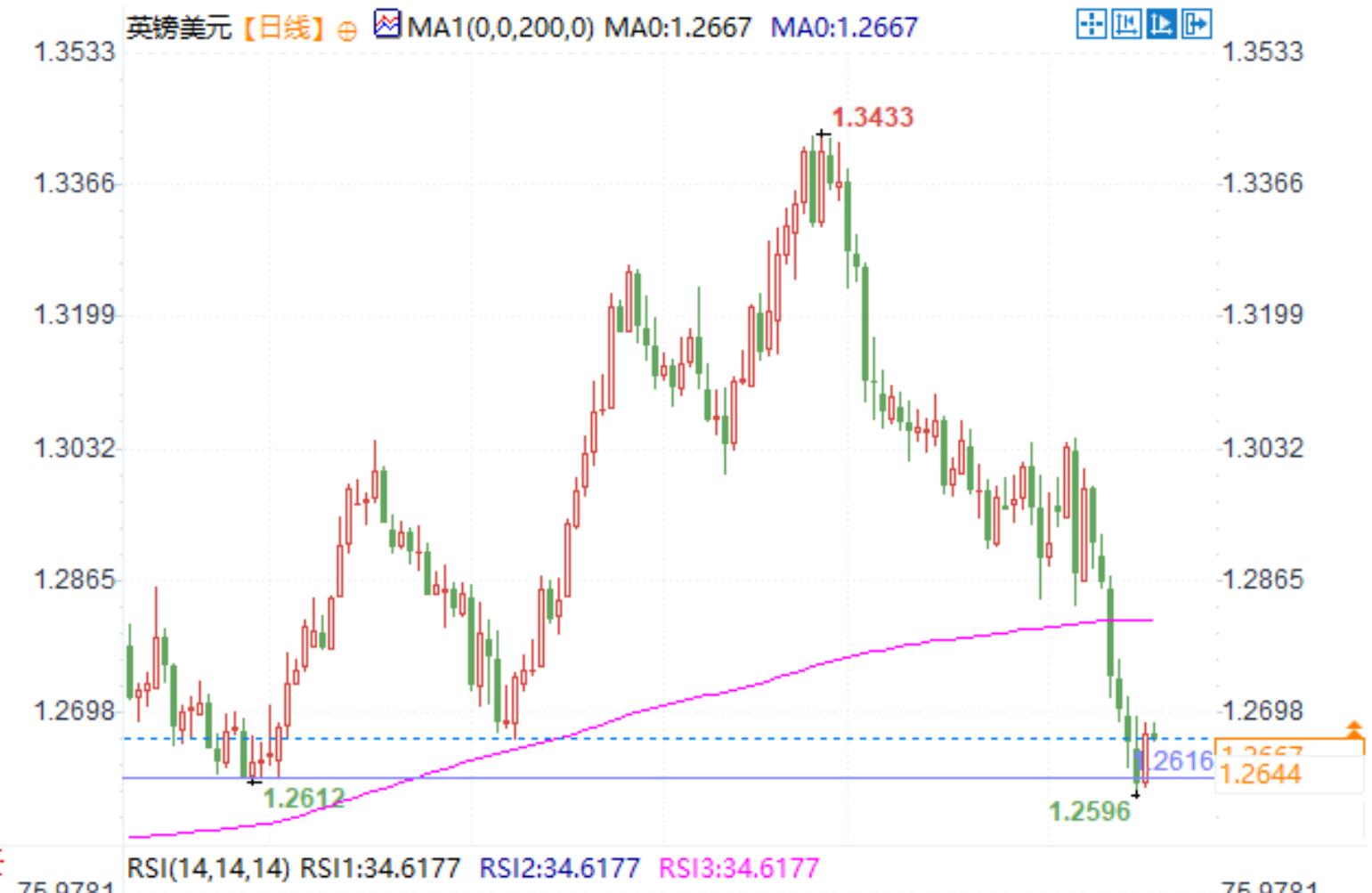Can the pound reverse its decline? CPI data and central bank hearing will be crucial!
On Tuesday (November 19th), the pound continued to fluctuate within a range against major currencies, with investors focusing on several decision-makers from the Bank of England (BoE) who are about to attend a hearing of the Finance Committee. The hearing is expected to start at 18:00 Beijing time, with Bank of England Governor Andrew Bailey and several decision makers answering questions about recent interest rate decisions, and the market watching to see if it will reveal the direction of future monetary policy.
At the same time, GBP/USD is now trading around 1.2666, continuing the rebound from Monday's six-month low of 1.2600. However, the pound as a whole is still constrained by the support of US economic data and the strong performance of the US dollar. The US dollar index (DXY) fell from a high of 107.00 earlier, boosting the short-term recovery of the pound.
Fundamental analysis: Bank of England policy outlook uncertain
The market generally expects that the Bank of England will cut interest rates by another 25 basis points in December, with interest rates possibly dropping to 4.50%. The background of this policy path is that the growth rate of the UK economy has slowed down and core inflation has eased. The Bank of England implemented its second rate cut of the year in November, and if the expected rate cut in December is realized, it will be its third action of the year.
However, the October inflation data released this week will be the key factor determining the policy for December. The market expects the overall year-on-year growth rate of CPI in October to rise from 1.7% to 2.2%, while the core CPI growth rate may remain stable at 3.2%. The service inflation data that the Bank of England has long been concerned about will also be the focus of this report, and its performance may directly affect market expectations for interest rate decisions.
Renowned institutions have pointed out that there is still uncertainty in the market's pricing of interest rate cuts, especially if service inflation heats up beyond expectations, which may prompt the Bank of England to delay further easing actions. This makes tomorrow's CPI data the focus of investors' attention this week.
Message analysis: Pressure brought by the strong US dollar
Despite the short-term rebound of the pound from its low point, the overall trend is still suppressed by the strength of the US dollar. After Trump's re-election as president, the uncertainty of US economic policies has decreased, and the better than expected retail sales data in October has cooled down market expectations for the Federal Reserve's interest rate cut in December. At present, the market expectation that the possibility of the Federal Reserve keeping interest rates unchanged in December has risen to 58.4%.
Renowned institutions believe that the Federal Reserve may cut interest rates in March and June next year, but inflationary pressures and improved economic data have suppressed expectations of short-term rate cuts. In this context, the strength of the US dollar may be difficult to reverse in the short term, and GBP bulls need to rely more on policy signals released by the Bank of England.
Technical analysis: GBP faces technical resistance and support
From a technical perspective, GBP/USD has gained some buying support around 1.2600 in the short term, but the overall trend remains bearish. The current exchange rate is running below the 200 day moving average (EMA) of 1.2850, indicating a weak overall trend.
The Relative Strength Index (RSI) is around 30, indicating that action still dominates.
In the short term, the support level of 1.2500 is a psychological support area. If it falls below this level, it may trigger a larger scale sell-off.
In terms of upward resistance, the area around 1.2750 is the primary target for recent bull rebounds, followed by the 1.2850 area where the 200 day EMA is located. Breaking through this point is necessary to confirm a short-term reversal.

Outlook and Summary
In the short term, the trend of the pound will still revolve around the Bank of England hearing and CPI data. If the hearing sends a more dovish signal or if CPI data falls below expectations, the pound may face further downward pressure. On the contrary, if inflation data unexpectedly rises, it may briefly boost market bets on the Bank of England tightening policy, thereby providing support for the pound.
In the medium term, the trend of the pound is still subject to the interweaving of external pressure from the US dollar and internal factors in the UK economy. In the current market landscape, investors need to closely monitor the impact of inflation data and monetary policy statements on short-term trading sentiment.
Tips:This page came from Internet, which is not standing for FXCUE opinions of this website.
Statement:Contact us if the content violates the law or your rights
